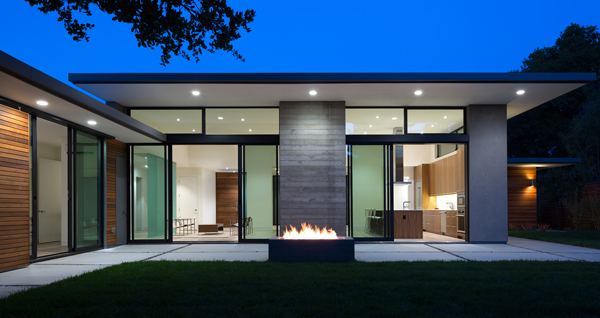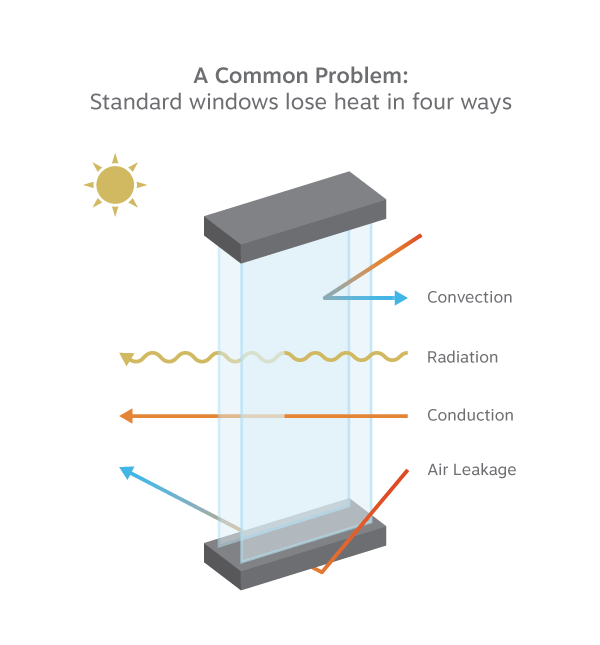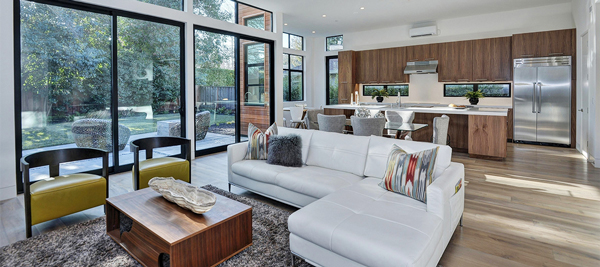These resources are from an archived version of our website. Want to see what we’ve been up to lately? Check out our new website.
Choosing energy-efficient windows (Part 2) – understanding solar heat gain co-efficiency

As we mentioned in our last post, Choosing Energy-Efficient Windows (Part 1) – Understanding U-Factor, selecting the right windows is a big decision when building a passive-inspired home. It’s also one of the most important elements for both energy efficiency and aesthetics. In this article, we’ll discuss another essential aspect of energy-performance rating in windows – the solar heat gain coefficient (SHGC).
How does energy flow through windows?
As illustrated below, windows lose and gain heat by convection, radiation, conduction, and air leakage.
- Convection occurs when the air gives up its heat to the cooler glass and sinks to the floor. This movement brings new, warmer air toward the glass that is in turn cooled, creating a draft.
- Radiation is the movement of heat as infrared energy through the glass. It radiates into the house (typically from the sun) and out of a house from objects such as people, furniture, appliances, and walls.
- Conduction refers to the direct transfer of heat through the window to the outdoors (or vice versa). Around 2/3 of the energy lost through a standard window is through the glazing.
- Air Leakage is the passage of heated air through cracks in the window frame and around weather stripping.
This is important to consider when selecting the correct windows for your new home (or when replacing standard windows with new energy-efficient products).

What is solar heat gain
co-efficiency (SHGC)?
One way of evaluating how well window transmits heat is to check its SHGC. SHGC refers to how well a window blocks heat from the sun’s radiation. During the day, a fraction of solar radiation is admitted through a window, door, or skylight. It can be transmitted directly from the sun – or absorbed from reflected radiation or diffused radiation.
In energy-performance ratings, the SHGC is expressed as a number between 0 and 1. For example, an SHGC rating of 0.30 means that 30% of the available solar heat can pass through the window. The lower the SHGC, the less solar heat the window is transmitting.
A product with a high SHGC is more effective at collecting solar heat during the winter. Conversely, a window, door, or skylight with a low SHGC is more effective at reducing cooling loads during the summer (by blocking the sun’s heat gains).

The SHGC rating of a window is generally based on the entire window assembly – this includes the combination of the glazing, window frame, glass type, and any spacers. The non-profit organization, National Fenestration Rating Council (NFRC), tests window products and assigns SHGC ratings. The NFRC administers the only independent rating and labeling system for the energy performance of windows, skylights, doors and attachment products.
Can large windows still realize energy efficiency?
In designing and building a passive-inspired home, the best approach to choosing windows depends on the climate, orientation, shading, location, and so on. It also depends on the design and overall style of the home. That said, many people wonder if they can incorporate large windows into their home – since they create a modern feel, bring in more natural light, allow for gorgeous views, and improve curb appeal.

Our answer is a resounding Yes! When it comes to your high-performance home, you do not have to limit your style choices. Fortunately, large energy efficient windows reduce your energy bills in a similar fashion to smaller ones. They are great for connecting modern interior design with natural light –creating an internal home environment that is bright, comfortable, and beautiful.
Rest assured– you can have the high-performance home of your dreams, without sacrificing sustainability.
Ready to build your high-performance custom dream home? Give Clarum Homes a call at 650.322.7069 or download our High-Performance Home Building Guide to learn more.








